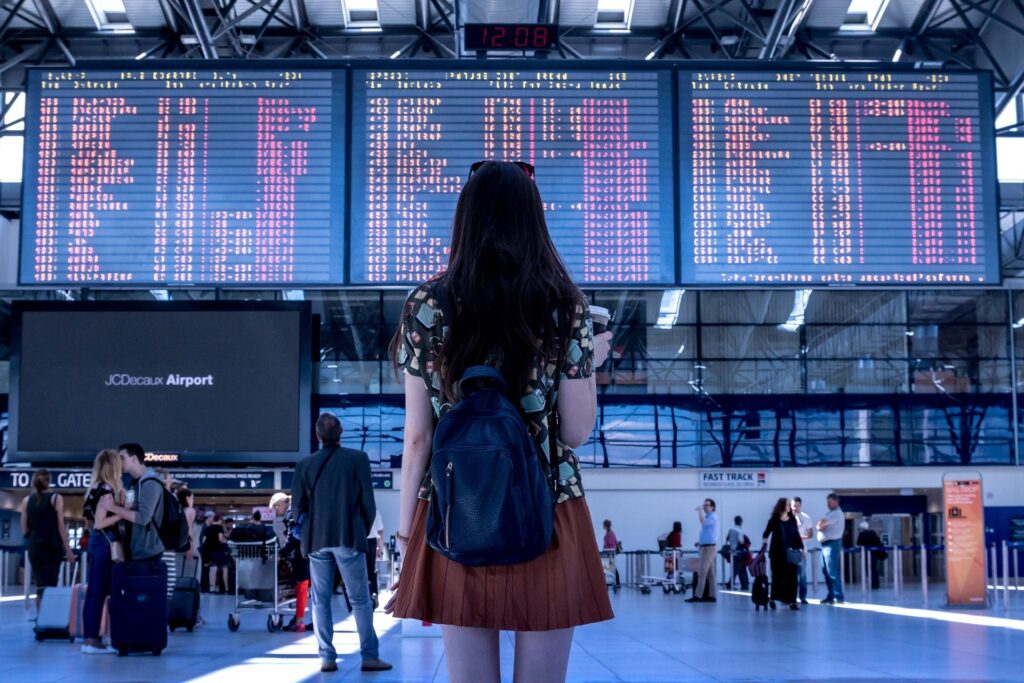Sean Wargo, senior director of market intelligence at AVIXA, discusses the future of audiovisual technologies in the transportation sector.
As travelers, we are used to technology being all around us. The very experience itself is a technological feat, whether flying the skies within one of the latest airliners or cruising the high-speed rails on a bullet train. What we are less likely to immediately notice, though, are the many ways in which technology contributes to and facilitates the experience of travel beyond the vehicles themselves. It’s only in periods of disruption, such as during a global pandemic, when we see the fabric of that technology web changing and so may notice differences. Or, if you happen to come from an association whose membership helps build out the supporting technology mosaic within transportation hubs, then having an eye for all the components becomes an occupational hazard. So, it is for us at the Audiovisual and Integrated Experience Association (AVIXA).
What we are particularly referring to here are all the audio and video elements that are now an integrated part of the hubs we stroll through on our travel journeys. The most prominent are the large number of displays, or digital signage installations, used to communicate updated route and security information to travelers or simply to entertain and inform in waiting areas. Still others serve as menu boards or branding vehicles. Audio systems are also present, in the form of public address systems. And of course, security cameras and monitoring devices hide in the wings as the constant sentries ensuring our safety. These watchful eyes in turn feed control rooms with data for assessing the overall security situation.
The connected web of products represents a growing amount of investment made by travel hubs in the total experience of travel. According to AVIXA’s annual industry forecast of the revenue associated with these investments, transportation is expected to account for US$11.1bn in 2021 global spending on AV products and services like those mentioned above. Due to the impact of Covid-19 on travel as a whole, this is down from the peak year of 2019, when spending hit US$12.3bn, but is up from the worst effects in 2020. In all, AV-related spending fared somewhat better in transportation than other segments of the AV industry due to a need to implement technology to support health and safety guidelines for mitigating viral spread. Signage is perhaps the simplest form of this, with video displays offering distancing and masking instructions. Hybrid signs with temperature screening and facial recognition are more sophisticated examples as well.
AVIXA predicts that this adaptation and corresponding investment will drive growth for the vertical over the five-year range of the forecast. The peak of this growth is expected to come in 2022, when spending will rise 15.8%, before settling into a compound annual growth rate of 9% from 2021 to 2026. Security, surveillance and life safety solutions, control rooms and digital signage installations will dominate this spending in the forecast period and beyond.
While pandemic response plays a role in shaping the technology investments by transportation facility managers, other research from prior to the outbreak shows there are some longer-term trends also in play. One of the biggest among these is the importance of branding to the involved travel companies. Given the time spent and the number of travelers flowing through any given hub, such as an international airport, the opportunities for marketing impressions by major brands are tremendous. It’s no surprise then that a study of purchasers of AV solutions in transportation hubs by AVIXA back in 2019 revealed that branding was a top-three outcome from AV investments within the hub. This also corresponded with an intention to increase spending on digital signage and video projection over the coming years. As noted above, these fixtures are able to serve both as information delivery and vehicles for branding, whether by general corporate advertisers or the transportation companies and brands themselves. Declining display prices aid this as it fosters the integration of more displays and thus more opportunities for impression.
Data from travelers captured within the same AVIXA study demonstrates the intersection between business needs like those above and the needs of the travelers themselves. Satisfaction scoring reveals that waiting area comfort and the availability of food and beverage options both positively impacted overall traveler satisfaction on their most recent travel journeys. Each of these areas is improved by signage since it serves to both entertain in waiting areas and inform about available food and beverage options. Yes, this data was collected before the pandemic, but these truisms likely still remain even if they may occur alongside interest in safety and security.
The ultimate point is to demonstrate the importance of integrated technology solutions within travel hubs to enhance and improve the overall travel experience. Covid-19 has both multiplied and modified the nature of the technology investment. But at the core, AV and related technologies are an increasingly important part of the intricate mosaic of systems within hubs. As technologists as well, we at AVIXA look forward to seeing how this mosaic shifts in time, and will be along for the ride as the changes occur. And of course, like many, we wish for a speedy and safe return to travel.

